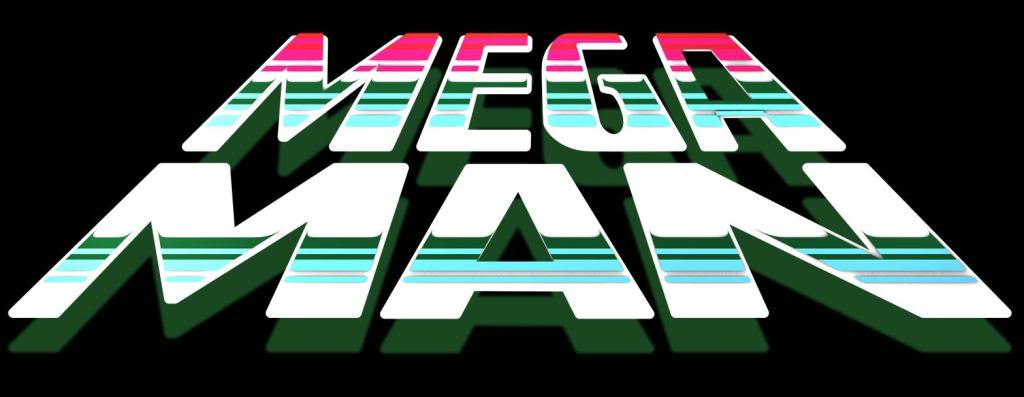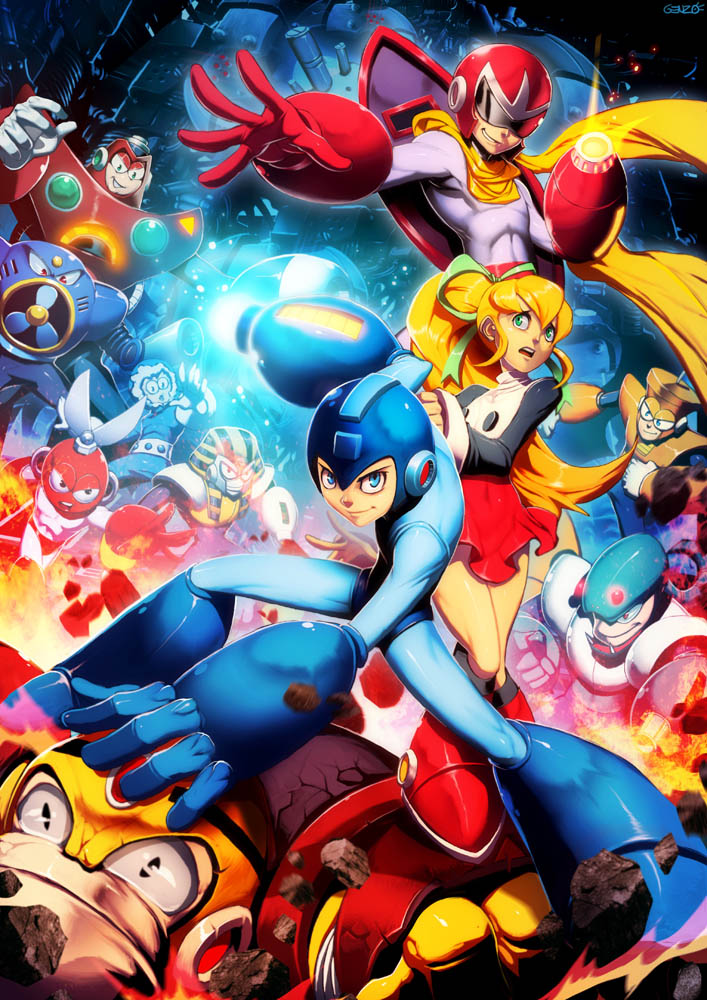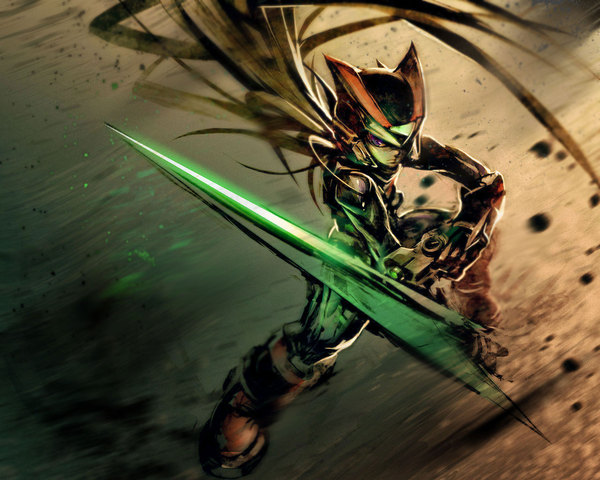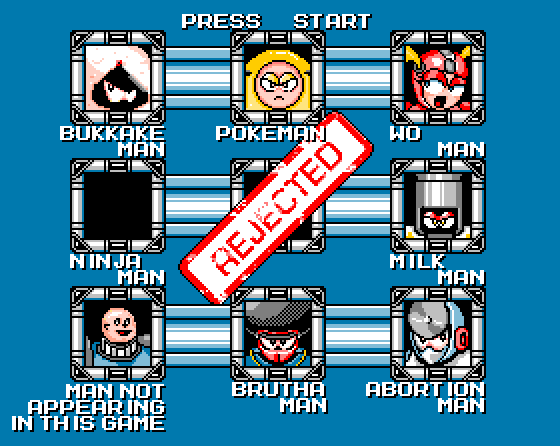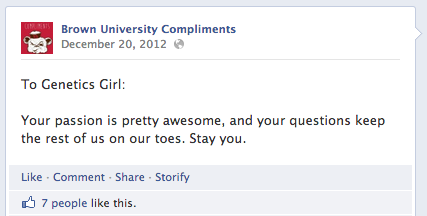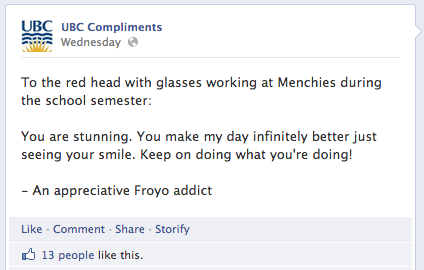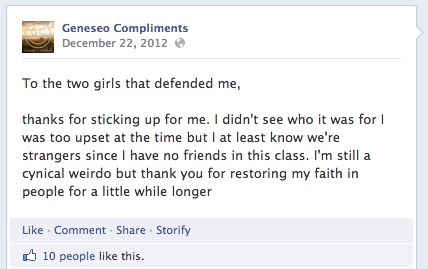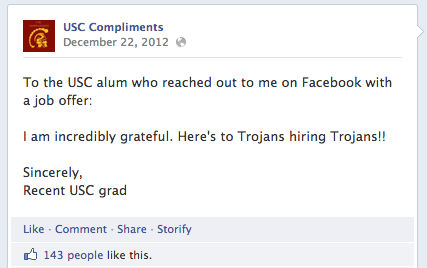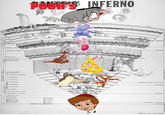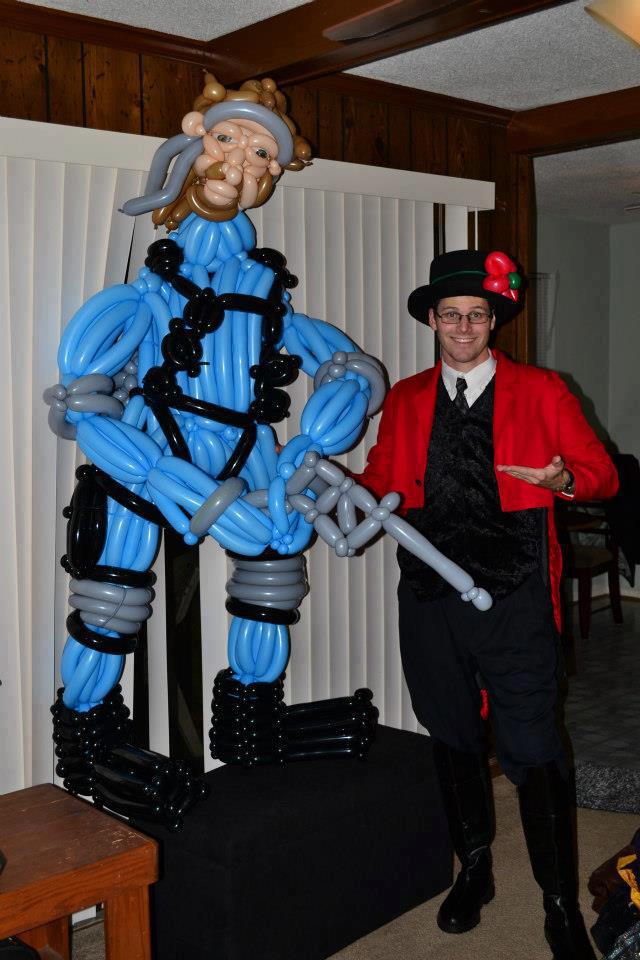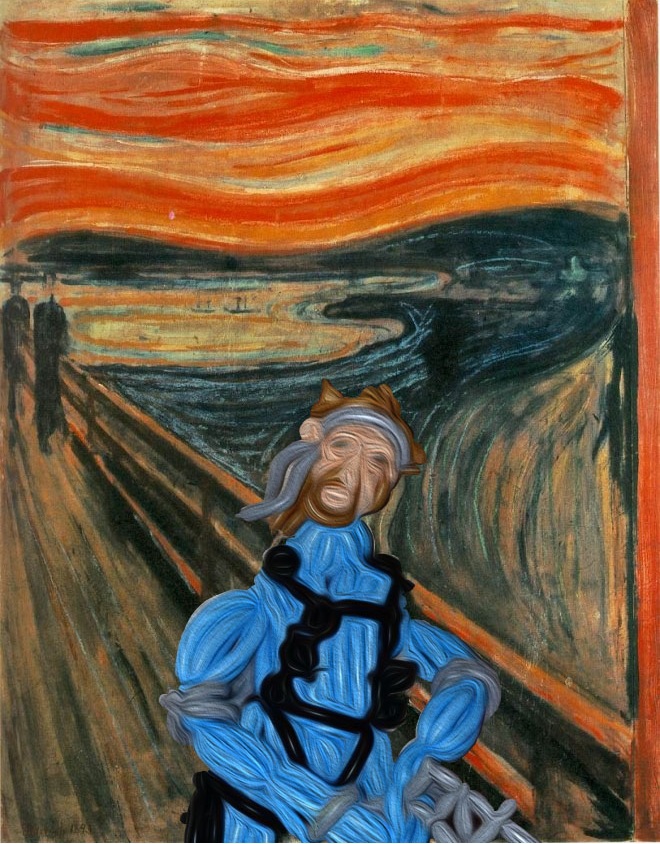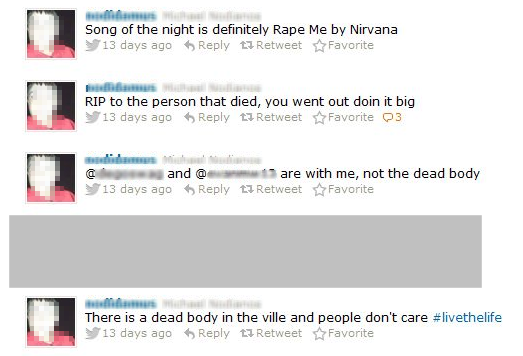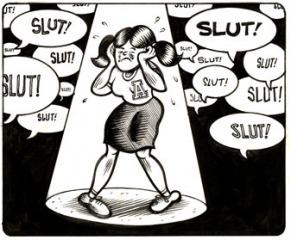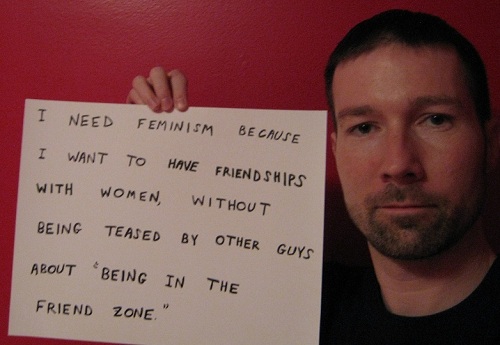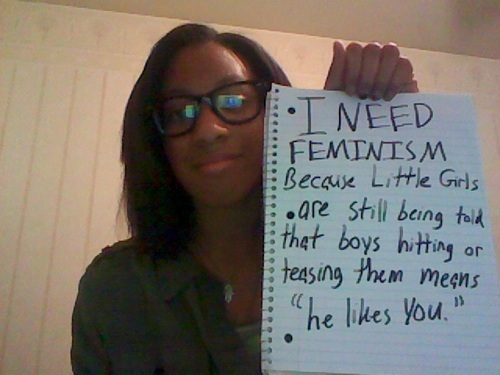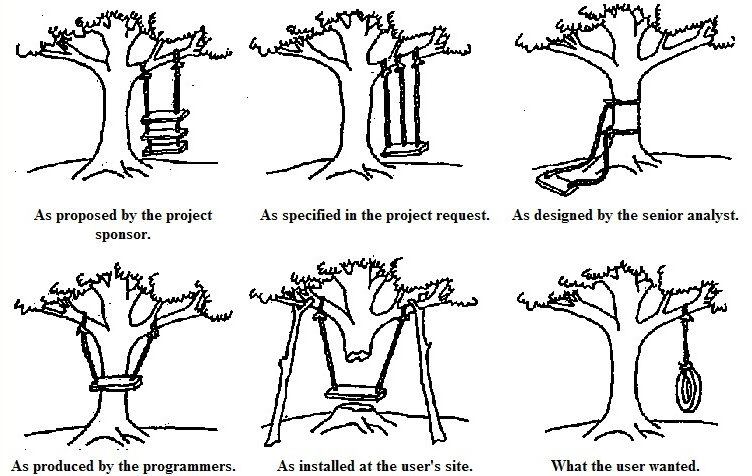WORK IN PROGRESS– ASKFOREDITORSHIP
![]()
About
Mega Man, also known as Rock Man (Japanese: ロックマン) in Japan, is a successful video games series created by the video game company Capcom. The game features an incantation of a robot named Mega Man (aka the Blue Bomber), who utilizes his Mega Buster to fight various forms of evil including Dr. Wily and Sigma. Since it’s release in 1987, the series has sold over 29 million copies worldwide, spawning multiple spinoffs across various gaming platforms, and gained a strong presence on the internet.
History
Mega Man (Original Series)
The first Mega Man series started on the NES in 1987 with Mega Man. The game features the original Mega Man fighting 6 robot masters owned by the game’s villain Dr. Wily. By defeating a robot master, Mega Man acquires an ability of that robot master which can be used to defeat another robot which is weak to the ability. After defeating all robot masters, Mega Man would enter Dr. Wily’s skull castle, facing off against huge bosses, having a rematch with all robot masters, and a final showdown with Dr. Wily. Later installments had 8 robot masters instead of 6.
The series yielded 10 games with the Mega Man 1 to 6 on the NES, Mega Man 7 on the SNES, Mega Man 8 on the Playstation and Sega Saturn, and Mega Man 9-10 both on downloadable gaming services for the Wii, PS3, and XBox 360.
Mega Man X
Mega Man X is the first spinoff series, debuting in 1993 on the SNES. The series takes place decades afters the events of the first series. Similar to the original series, the player controls a new incarnation of Mega Man named X and battles 8 animal-like Robots known as Mavericks before squaring off against the series main antagonist Sigma. In addition to X, players can also control a saber wielding reploid named Zero. The series yielded 8 games with X1-X3 on the SNES, X4-X6 on the PS1, and X7-X8 on the PS2. In addition, an RPG titled Mega Man X: Command Mission was released for the Gamecube and PS2. Zero became a popular character and has been used in many Capcom fighting game series.
Mega Man Legends
Mega Man Legends is the third series in the franchise and differs widely in gameplay. The protagonist controls a teenager named MegaMan/Rock Volnutt who searches through ruins for energy sources. With help from his adopted sister Roll Caskett, Rock works to obtain this sources from the Bonnes, a group of pirates along with their Servebots. The series spawned 2 games and a spinoff featuring Tron Bonne, all for the Playstation.
A third game was announced for the 3DS, but was cancelled shortly after production of the Prototype was created, yielding a massive fan backlash towards Capcom along with a fan-driven campaign to resurrect the franchise.
Mega Man Battle Network
Mega Man Battle Network takes place in an alternate universe where people use programs called NetNavis to navigate through cyberspace. The protagonist is a preteen named Lan Hikari, who uses his NetNavi Megaman.EXE (Rockman.EXE in Japan) to battle various evils including Mr. Wily (no relation to Dr. Wily) and his organization WWW (World Three). The gameplay also differs as Battle Network relies heavily on RPG elements. Battles are fought on grids and Megaman.exe can use battle chips to perform attacks and improve his stats.
The series was primarily on the Game Boy Advance and spawned 6 titles, though some titles had different versions (similar to Pokemon). In addition, a game titled Megaman Network Transmission was released for the GameCube.
The series also spawned an anime series MegaMan NT Warrior which followed the video game series but had major differences in the plot and characters. The anime ran from 2001 to 2006.
Mega Man Zero
Mega Man Zero can be seen as a sequel to the Mega Man X series. The Zero series focus on the reploid Zero, approximately one century after the events of the MMX series. Zero joins a group of reploids in battling the forces of Neo Arcadia. Similar to the X series, the Zero series requires defeating enemies by using different weapons. The series has been known to be incredibly more difficult than it’s predecessors.
The series saw 4 releases on the Gameboy Advance with the first game (Mega Man Zero) seeing it’s release in 2002. A spinoff series Mega Man ZX was launched in 2006 on the Nintendo DS, which was later followed up by a sequel Mega Man ZX Advent.
Mega Man Star Force
Mega Man Star Force is a series that take place 200 years after Mega Man Battle network and returns to the RPG styled gameplay as seen in Battle Network. The Star Force series spawned 3 titles on the Nintendo DS.
Rockman Xover
Rockman Xover is a crossover video game released on the Apple IoS system. The game was released in 2012 to coincide with the 25th anniversary of the Mega Man franchise. The game features a new protagonist who battles villains from all Mega Man series to date. The release of the game generated a negative backlash from fans.
Street Fighter X Mega Man
Street Fighter X Mega Man is a crossover video game originally starting as a fan game from a Singaporean fan developer before being published by Capcom. The game features the original Mega Man battle various Street Fighter characters including Ryu and Chun-Li. Street Fighter X Mega Man was made as a free download from Capcom-Unity on December 17, 2012. The gameplay and graphics are in vein with the original Mega Man series, including 8-bit graphics. Various Street Fighter music themes were “mashed-up” with Mega Man themes.
Online Presence
Though the official series presence online is limited, the official Facebook page was set up and accumulated 140 thousand likes as of January 2013, and the official @MegaMan Twitter account was created on November 20, 2012 has gained of 3,000 followers as of January 2013.
Fansites
The series has managed to develop an early presence on the net. The earliest Mega Man fansite was the Mega Man Homepage, which was launched in 1994. The site’s main goal is to provide a source of information within the series and franchise. It is also dedicated to providing news info within series, and providing links to site about fan fiction, art, music, etc. in it’s ’Fan Community" section.
Four years later, The Mega Man Network, formerly known as Mega Man X Online, was created by Reeve and DarkMoogle, and made open on August 2000. The site’s original focus was to provide information about the Mega Man X series, but due to the growing popularity of the site, the site change their name to The Mega Man Network in 2002, providing news and infomation to the rest of the series.
The wikia site “Mega Man Knowledge Base” was created on May 2005, as a comprehensive database for the franchise, ranging from video games, characters, and merchandises. As of January 2013, the site has complied more then 3,000 articles.
Fan Art
On the art-sharing site deviantArt, fan art featuring characters from the series has been posted to the site, with over 65,000 results under the search term “Mega Man,” as of January 2013. On FanFiction.net, over 5,000 stories has been added, as of January 2013.
![]()
![]()
![]()
Related Memes
Gutsman’s Ass
Gutsman’s Ass is a YouTube Poop fad which utilizes a scene from episode 2-25: Bad Day at Peril Park of the animated series Mega Man. In the original scene, Rush, Mega Man’s robot dog sidekick, tore off the the tail of a Kangaroo disguise, revealing Gutsman. The fad initially sparked after Youtuber Kajetokun uploaded the scene to the site.
![]()
Rejected Mega Man Villains
Rejected Mega Man Villains refer to a YTMND fad which features a series of fan-created characters that portray as villains from from the series. The characters often feature unconventional designs and names, to appear as if they were turned down by the video game company Capcom.
![]()
What am I Fighting For!
“What am I Fighting For!” is a catchphrase first said by main character Zero during a cut scene from the video game Mega Man X4, first released on the Sony Playstation on 1997. Zero said the phrase after having his love interest, Iris, die in his arms. Since then, the quote became notorious with Mega Man fans, with the phrase becoming a subject of parody and remix.
![]()
Can’t Beat Air Man!
Can’t Beat Air Man! (Japanese: エアーマンが倒せない , Air Man ga Taosenai) is a doujin song based around the frustration the player feels when trying beat Air Man, one of Dr. Wily’s evil minions and a boss character, who first appeared on Mega Man 2. The song has been remixed and covered after being uploaded to the Japanese video-sharing site Nico Nico Douga on 2007.
![]()
110 Million Memories! / Okkusenman!
WIP
Green Biker Dude
WIP
You Got Mega Man
WIP
Search Interest
External References
